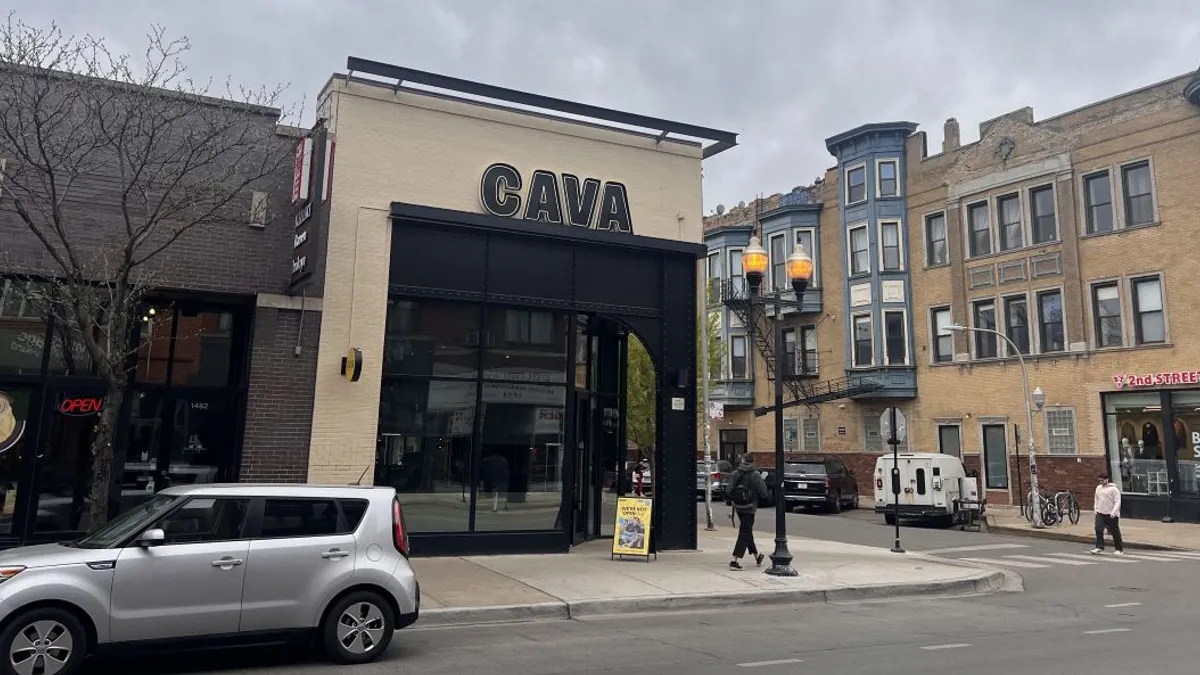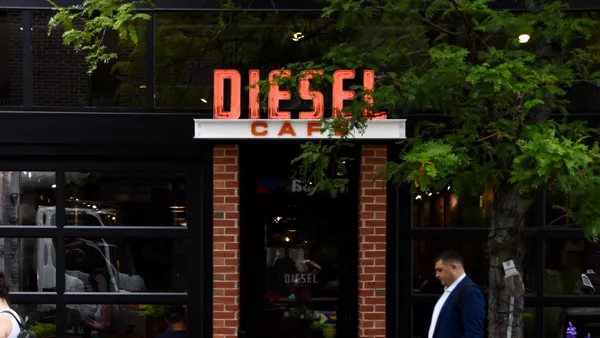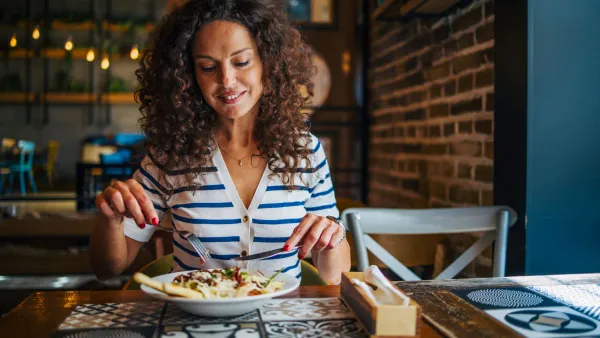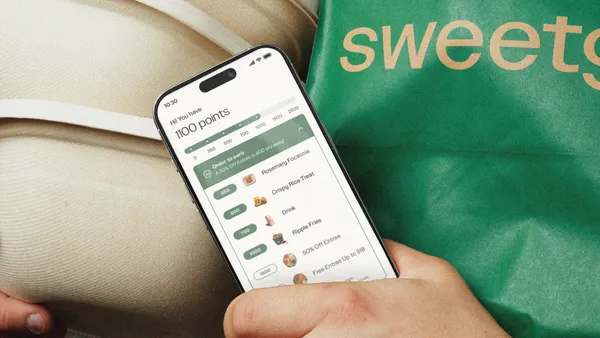The end of this restaurant earnings season recalls a version of the opening lines from Leo Tolstoy’s “Anna Karenina”: Successful brands are alike; each unsuccessful brand is failing in its own way.
This is truer in the waning weeks of 2024 than at any other point in recent quarters: Restaurant brands with a strong value proposition closely tied to brand identity are doing well, while those that don’t are failing for a variety of reasons despite aggressive value initiatives.
Restaurant Dive went through the Q3 earnings results of a large number of publicly traded restaurant brands and identified five winners and five losers for the quarter based on the content of earnings calls and several key performance metrics, primarily same-store sales.
But before exploring the whos and hows and whys of the quarter’s divergent results, it’s worth pausing for some honorable mentions. Shake Shack and Chipotle both saw strong unit count growth in the quarter and positive same-store sales, but the closure of nine units at Shake Shack in September excludes it from being a clear winner in the quarter. Chipotle, meanwhile, was victimized by its own prior success, and its same-store sales growth was slower than in Q2 — 6% compared to 11%. That slowdown, combined with the departure of CEO Brian Niccol for Starbucks relegated the fast casual giant to an honorable mention. Texas Roadhouse likewise missed the winners podium due to its sales slowing slightly from Q2.
Other brands saw ambiguous performances. Wendy’s is closing some underperforming stores, but its same-store sales are up modestly. And some that saw sales declines were less impacted than other brands: Pizza Hut, for example, saw its same-store sales slide, but only by a middling amount for a QSR pizza brand.
Winners
Cava
In the 17 months since it debuted on the New York Stock Exchange, Cava has solidified its status as the clear category leader for Mediterranean fast casual. That continued in a wildly successful Q3.
The chain’s traffic was up 12.9% year over year, and its same-store sales jumped 18.1%, outpacing many other growing fast casual brands. Most of that came without a modernized loyalty program, and many of the chain’s other initiatives — the Project Soul remake of dining room interiors — are still at the testing phase, meaning Cava has cards left in its hand to play.
The chain does not seem to be slowing down its physical expansion. Despite having converted all the Zoe’s Kitchen units it acquired, Cava still managed to open 62 stores on net, with its recent openings in Chicago outperforming all previous new unit openings. In 2025, the brand will enter South Florida and a number of Midwestern cities outside Chicago, in a test of the national appeal of its bowl-based menu.
CEO Brett Schulman told Restaurant Dive that Cava has purposely held its menu price increases below the general rate of inflation and well below the restaurant industry’s overall rate of increase, which has helped draw consumers.
Wingstop
Wingstop’s same-store sales grew even faster than Cava’s, up 20.9% year over year, a blistering growth rate that pushed the brand’s AUV past $2.1 million, just one quarter after it first reached the $2 million threshold.
The fast casual wings chain was able to overcome the downward trend of traffic seen at many competitors, CEO Michael Skipworth said on its Q3 earnings call.
“We're continuing to showcase healthy transaction growth in our business,” Skipworth said. “We continue to see an uptick in frequency across every single [income] cohort.”
At the heart of that surging traffic is value perception, aided by supply chain efforts to keep prices steady and avoid the troubles caused by temporary spikes in the prices of chicken wings, Skipworth said.
“Our disciplined approach to pricing, we think, has paid dividends for us,” Skipworth said.
McDonald’s
McDonald’s was one of Q2’s losers in part because its competitors were quicker on the draw with value meals in the first half of the year. But the marketing power and extensive reach of the Golden Arches’ messaging, both on value and on core menu items, helped stem that slide in Q3 and turn same-store sales positive in the U.S. — though only by 0.3%.
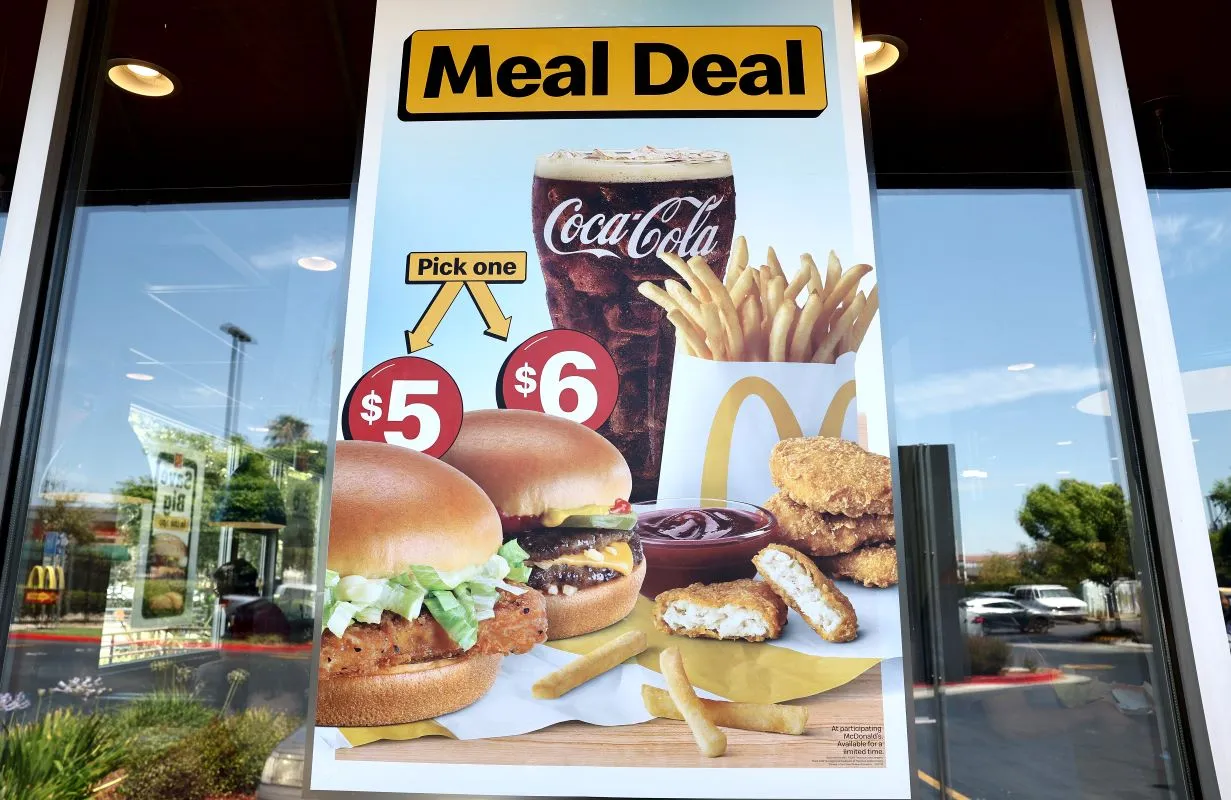
The $5 Meal Deal brought consumers back in, and items attached to orders, including that value deal, helped keep average check size above $10, CFO Ian Borden said on the chain’s earnings call.
Given that other major brands, like Starbucks, have seen their traffic and sales declines stretch across multiple quarters, McDonald’s rapid adjustments to value and messaging are a case study in catching the value wave at the right moment.
But McDonald’s earnings news was overshadowed by an E. coli outbreak that sickened more than 100 people and was eventually tied to slivered onions used on its Quarter Pounders.
From an operational perspective, McDonald’s swift removal of suspect sandwiches from thousands of stores and its ability to shift supply chain operations were quite successful at limiting the outbreak. But the broader brand damage done by the outbreak and the subsequent traffic fall-off likely mean the chain may end up a Q4 loser, and it has resorted to significant expenditure to persuade consumers to come back.
Domino’s
Domino’s outperformed its close QSR pizza competitors in same-store sales growth in Q3. That’s not an exception for the brand. Since Q1 2023, Domino’s has seen same-store sales growth in every quarter, while Papa Johns and Pizza Hut have seen declines four of six quarters.
CEO Russell Weiner, speaking on the chain’s Q3 earnings call, attributed that success to longterm consumer value perceptions as the chain employs “more aggressive promotional pricing that drives a consistent value message to customers.” Examples in Q3 and Q4 include its MOREflation deal, Emergency Pizza promotions and 50% boost weeks — a tool used in both Q2 and Q3, according to Reuters.
The chain’s loyalty program has also played a role. Its relaunch in late 2023 drew an influx of members, and the reduced rewards threshold and diversified options gave it a broader consumer appeal. This paid off in repeat visits, Weiner said.
“Domino's Rewards is achieving our goals of driving more light users and carryout customers. In addition, we have grown our overall active members significantly in 2024,” Weiner said.
That success, Weiner expects, will continue.
Chili’s
While other casual dining chains were seeing sales slump and stores close or even filing for Chapter 11, Chili’s managed a whopping 14.1% comparable sales jump. That sales growth was driven by at least 6.5% traffic growth, according to Brinker CEO Kevin Hochman.
Chili’s sales jump was so dramatic, in fact, that the chain was forced to deploy extra labor to maintain consistent service, Hochman said.

The key to its success was the brand’s Big Smasher burger, Triple Dipper, and 3 for Me combos, per the earnings release. The Big Smasher burger meal has drawn the most public attention because it’s price competitive with QSR burgers.
Alcoholic beverages, particularly margaritas, have also been a strength for the chain, which sells a $6 Marg of the Month and a more expensive Don Julio margarita, which Hochman described as an example of barbell menu pricing strategy.
Chili’s plans to continue offering the Big Smasher burger deal through the end of its fiscal third quarter in 2025. After that, Hochman said, the brand may change the emphasis of its value messaging to a new menu item for its 3 for Me combo to avoid consumer fatigue, though continued strength with the Big Smasher could change that strategy.
Losers
Starbucks
The beginning of Brian Niccol’s term as CEO at the world’s coffee chain brought plenty of forward-looking news. The chain wants to increase speed of service, offer more comfortable cafes and bring back its drinks condiments stand, its in-store ceramic mugs and its neighborhood coffeehouse vibe.
But all those intentions do not obscure one central fact: Starbucks took a beating in its fiscal Q4. The chain’s traffic was down 10% year over year and same-store sales fell 6%.
The chain’s problems are deep-seated and multi-faceted: a brand identity strained by an unfocused menu; store experiences tarnished by trade-offs between speed and comfort; consumer pullback due to pricing, and due to the chain’s perceived responses to the war in Gaza and to Starbucks Workers United.
All those problems are long-term. Niccol and other executives have undertaken measures to restore traffic.
The chain plans to launch a marketing program that “focuses on talking to all customers and elevates the Starbucks brand in a much more visible way through broad reach media like linear TV,” Niccol said.
But the severity of that 10% drop will take time to recover from, and it’s possible the brand isn’t out of the woods yet on the worst of its traffic problems.
Papa Johns
If Domino’s was the standout success in QSR Pizza, Papa Johns was the definitive loser. The brand’s U.S. same-store sales fell 6%.
Transaction growth in the brand’s delivery aggregator channels was offset by “a decline in our organic delivery and to a lesser extent, a carryout business,” said Ravi Thanawala, the brand’s CFO, on its earnings call.
Those sales problems were exacerbated by the overall value environment. The last two quarters saw such a burst of messaging that the value plays of weaker brands failed to produce the expected traffic bumps. Now, Papa Johns is pushing to rework its loyalty program, which could become a longer term growth driver. The brand also now consistently offers its $6.99 mix-and-match deal, Papa Pairings, Thanawala said.
Thanawala cautioned, “it will take several more quarters to further narrow our value perception gap versus others within the QSR segment.”
Restaurant Brands International
Burger King initially performed well in the 2024 value wars, and preempted McDonald’s value meal with its $5 meal deal in June. But that flood of value messaging swept away Burger King’s advantage over McDonald’s, and the brand’s U.S. same-store sales fell 0.4% in Q3, according to RBI’s earnings release. Burger King was further struck with net unit decline, with its store system shrinking 1.5%.
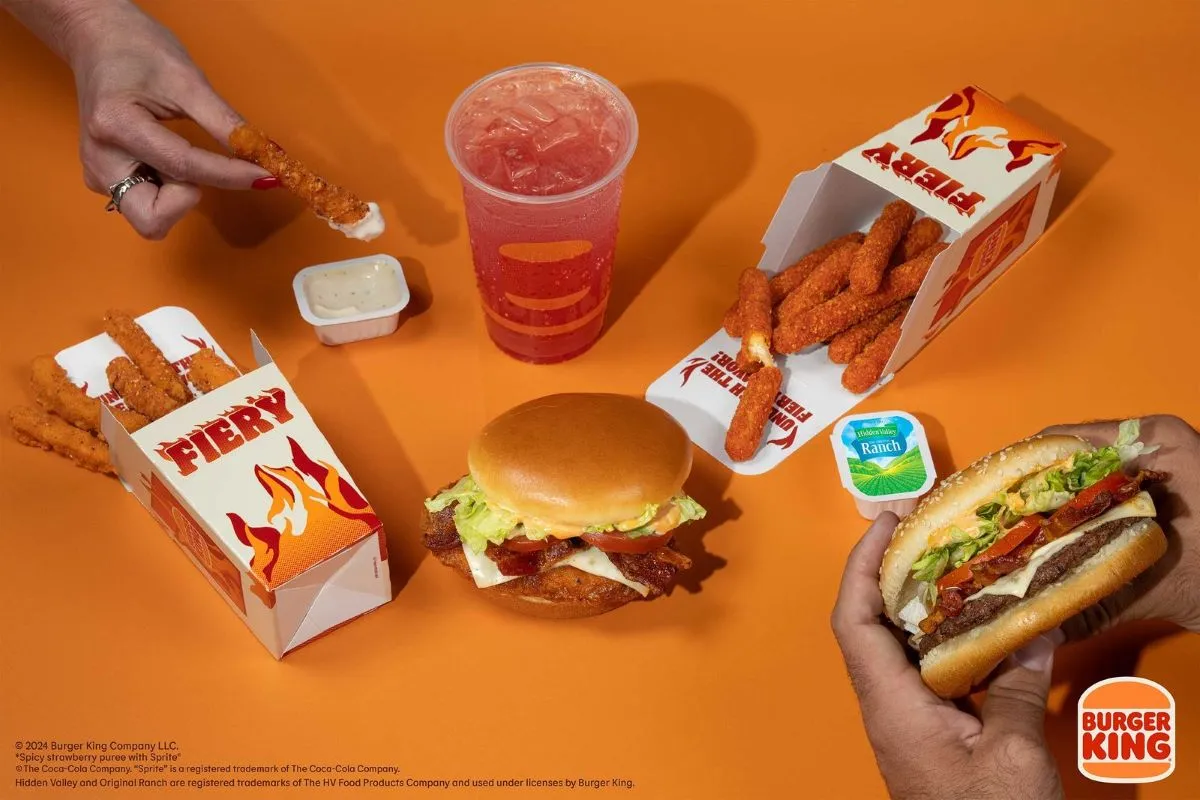
On the company’s most recent earnings call, CEO Josh Kobza offered a succinct explanation for Burger King’s sales problems: “Our calendar initiatives, including Fiery [Menu], were unable to cut through all the value messages in the market.” Kobza gave a similar description of Popeyes’ problems and resolved that both brands would lean more on value in the coming months.
RBI’s other brands mostly saw sales trouble in key markets. Popeyes’ comps fell 3.8% in the U.S., while Firehouse Subs lost 4.8% of its comparable sales. Tim Horton’s saw comparable sales growth in its home market in Canada.
With McDonald’s facing traffic headwinds related to an E. coli outbreak, and KFC suffering in general, RBI may be able to capitalize on the relative weakness of its proximate competitors in Q4.
Dine Brands
Like Starbucks, Dine Brands’ leadership has big ideas for fixing the company’s sales problems, namely the creation of dual-branded IHOP/Applebee’s restaurants that it projects can see 1.5 to two times the sales of its single-branded stores. But like Starbucks, those big plans are too far in the future to aid the chains in the present: Applebee’s same-store sales fell 5.9% and IHOP’s fell 2.1% in the quarter.
Applebee’s has now had six consecutive quarters of sales slumps while IHOP has had three.
Delays in construction and accelerated store closures also pushed the company to revise its unit growth projections for 2024 down from a net 15-25 new IHOPs to 0-10 new IHOPs, Vance Chang, Dine’s CFO, said on an earnings call. Applebee’s store footprint will shrink between 25 and 35 stores on net this year.
Applebee’s will look to increase its value plays in particular, CEO John Peyton said.
“We learned from the first two quarters that we have to lean more toward the value portion of our promotions,” Peyton said.
One possible upside for Dine is that the upward drift of fast food prices has made casual dining more appealing to price-conscious consumers.
“A $10.99 burger or chicken sandwich at Applebee's is a very competitive price with a great experience,” Peyton said. “We have an opportunity to go after quick serve.”
KFC
Yum Brands’ chicken chain may be growing outside the U.S., but both at home and abroad its same-store sales are falling. That key metric dropped by 5% in the U.S. and 3% internationally last quarter. Dozens of units shuttered in relation to franchisee EYM’s bankruptcy.
The chain is facing competitive pressure from chicken brands ranging from Chick-fil-A and Popeyes to Zaxby’s and Raising Cane’s. KFC is currently suing one of its rivals, Church’s Texas Chicken, for using the phrase “Original Recipe” in its advertising.
KFC was one of the first out of the gate in the mid-year value wars, launching its $5 meal deal in April. However, consumers have paid the brand little mind, and its same-store sales have continued to sink. Its points-based rewards program has also failed to reverse the challenging sales environment.
Given the sharp divergence between Taco Bell’s U.S. performance and KFC’s, it’s possible Yum will try to adopt some of Taco Bell’s successful strategies, including menu innovation, premium LTOs mixed with steep value offers, and a digital focus. Yum has also looked to technical changes, like increased kiosk deployment, but it’s too early to say for sure whether KFC’s weakness in the United States can be solved by what are essentially marketing stratagems or if the brand has deeper problems.



